Jigokudani Snow Monkey Park: A Complete Guide
Etiquette for a True Connection
Welcome to the World of Snow Monkeys! More Than a Tourist Spot, a Quiet Dialogue with Wildlife
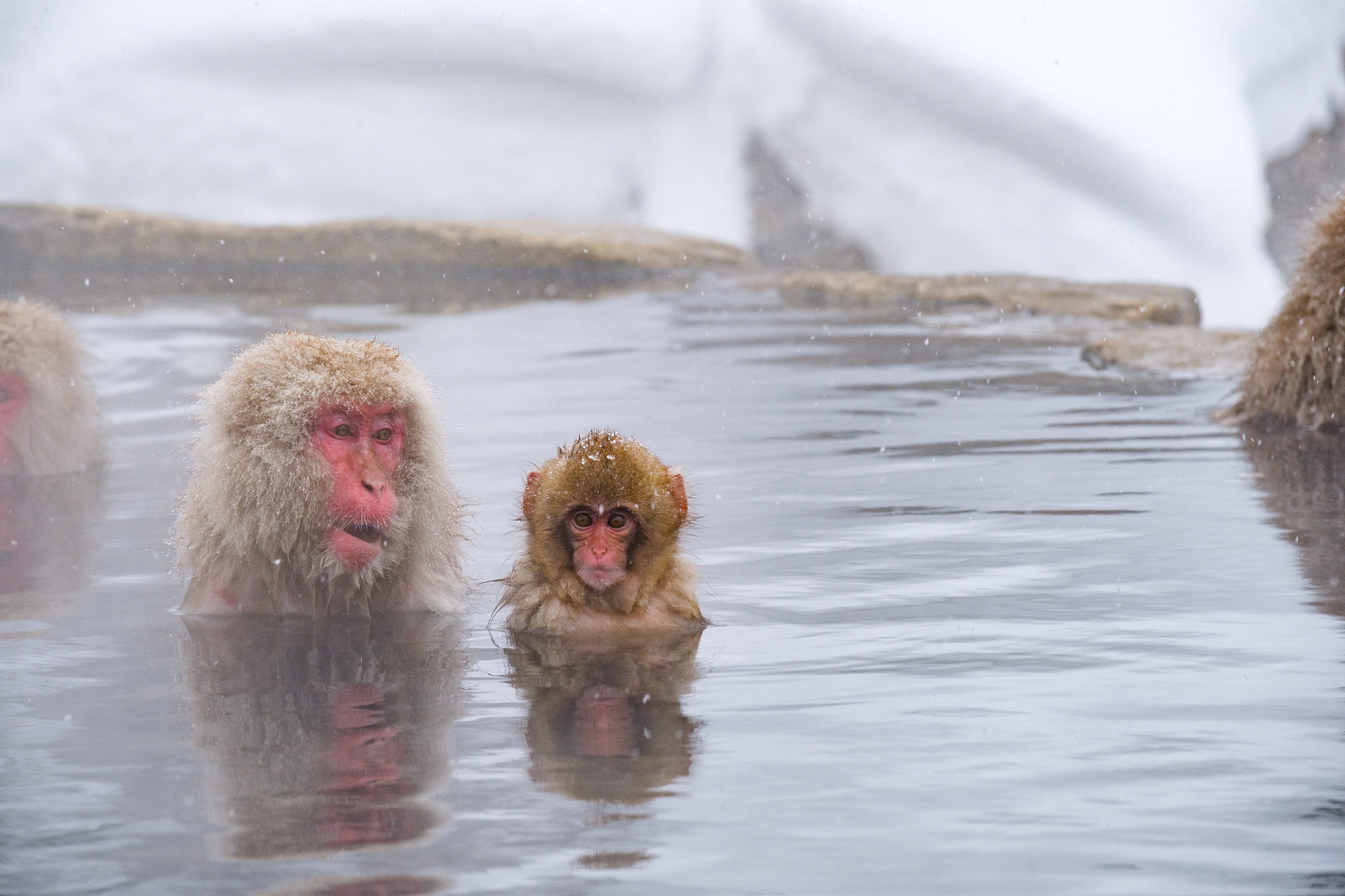
Deep in the snow-covered valleys of Nagano Prefecture, there is a sight that captivates travelers from all over the world. Amidst the biting cold, wild Japanese macaques soak blissfully in a steaming hot spring. They are affectionately known as the "Snow Monkeys."
A trip to this place, the Jigokudani Snow Monkey Park (Jigokudani Yaen-Koen), is not just a safari tour to see rare animals. It is a journey of "dialogue," where you are asked to quietly observe the lives of creatures thriving in a harsh natural environment and to humbly enter their world.
This guide will not only help you capture the adorable snow monkeys on camera but also to deeply understand the story of why they are here and how we should interact with them. The etiquette introduced here is not a set of restrictive rules. It is a sign of respect for our wild neighbors with whom we do not share a language, and it is the magic key to making your own experience unforgettable.
So, prepare not just your camera, but also your heart. A special journey into tranquility, the warmth of life, and the Japanese perspective on nature is about to begin.
Table of Contents
1. The Timeless Tale of Jigokudani: A Story of Monkeys and Humans Living Together
To understand this unique sight, one must first know the history of this land and the story woven by monkeys and people.
1-1. The Origin of "Jigokudani" (Hell's Valley): Harsh Nature and the Blessing of Hot Springs
The slightly terrifying name "Jigokudani" comes from the natural environment of the area itself. Surrounded by steep cliffs, it's a heavy snowfall region where snow can accumulate up to two meters in winter. The sight of high-temperature hot springs and volcanic steam violently erupting from all over was likened to "Jigoku" (hell) in Buddhism. However, this "hell" also brought a heavenly blessing for both monkeys and humans to survive the harsh winter: the onsen (hot spring). This place, where severity and blessing coexist, is the true essence of Jigokudani.
1-2. Why Do Monkeys Bathe in Hot Springs? A Moving History of Wisdom and Survival
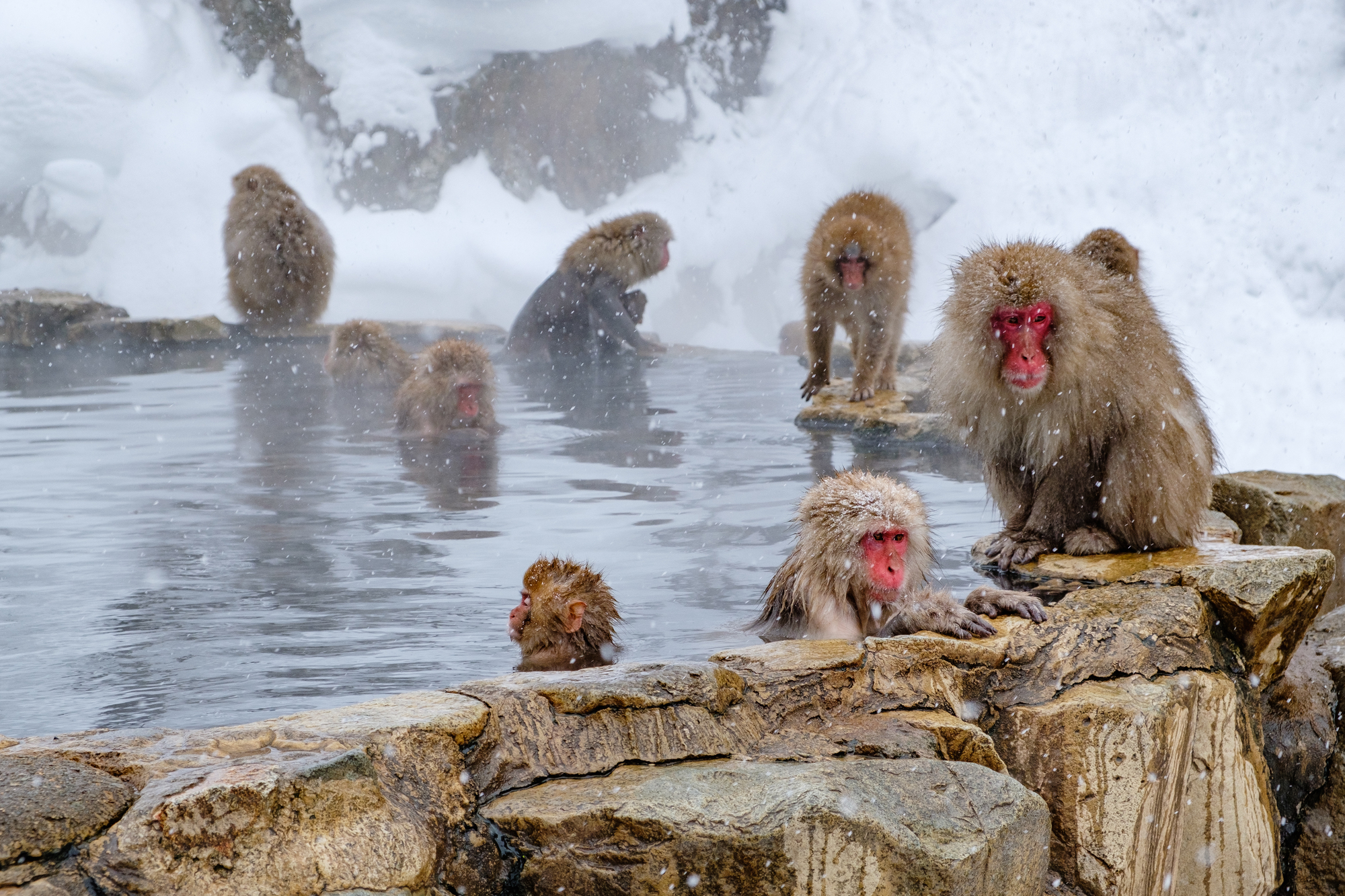
Originally, the Japanese macaques living here did not bathe in hot springs. The story dates back to the early 1960s. Displaced by development, the monkeys began to descend into human settlements, causing damage to crops. As the relationship between monkeys and humans deteriorated, Sogo Hara, an employee of Nagano Electric Railway, attempted to feed the monkeys, aiming for coexistence.
While the feeding was successful, the curious monkeys started entering the open-air baths of a nearby inn. According to one account, it all began when a single young monkey, seeing human children bathing, decided to imitate them. The sight was charming, but "mixed bathing" for humans and monkeys couldn't last due to hygiene issues. Thus, people who wished for coexistence built a dedicated open-air bath for the monkeys. This was the beginning of the "Jigokudani Snow Monkey Park," which opened in 1964. Their bathing is not just a whim. It is a form of wisdom to survive the severe winter cold and a testament to the history of coexistence with humans.
1-3. The Moment the World Took Notice: 'LIFE' Magazine and the Snow Monkeys
The Jigokudani monkeys became world-famous when they were featured on the cover of the renowned American photo magazine 'LIFE' in 1970. The photograph of a monkey soaking in a hot spring shocked the world, and the name "Snow Monkey" instantly became a global term. This single photograph enticed many foreign tourists to this remote, mountainous region of Japan.
1-4. [2025 Update] Evolving Surroundings and Sustainable Tourism
In recent years, the Jigokudani Snow Monkey Park has been exploring sustainable tourism to prevent overtourism and protect the monkeys' environment. Efforts are underway to enhance the live camera feed from the park, sharing its charm with those who cannot visit, and to work with the nearby Yudanaka and Shibu Onsen towns to disperse visitors. Eco-tours that offer a deeper understanding of the local nature and culture are also being developed, allowing for a more multifaceted enjoyment of the region beyond just seeing the monkeys.
2.Preparations & Basic Info: The First Step to a Smart Journey
Jigokudani is located deep in the mountains. Solid preparation is essential for a comfortable trip.
2-1. Complete Access Guide from Tokyo/Nagano (Shinkansen, Bus, Car)(As of October 2025)
- Shinkansen + Bus (Most Common): From Tokyo Station, take the Hokuriku Shinkansen to Nagano Station (approx. 90 mins). From Nagano Station's East Exit, take the Nagaden Express Bus for Shiga Kogen and get off at the "Snow Monkey Park" bus stop (approx. 45 mins).
- Train + Bus: From Nagano Station, take the Nagano Electric Railway to the terminal, Yudanaka Station (approx. 50 mins). From Yudanaka Station, take a local bus or taxi to the "Snow Monkey Park" bus stop (approx. 15 mins).
- Car: About 20 minutes from the Shinshu-Nakano I.C. on the Joshin-etsu Expressway. However, experience with driving on snowy roads is necessary in winter. The nearest parking lot to the park is paid and has limited space.
2-2. The Final Challenge? The Trail (approx. 25 mins) from the Parking Lot to the Park Entrance
From the bus stop or parking lot to the park entrance, you will walk along a 1.6km trail called "Yumichi." This is not a flat, paved road, but an unpaved path through the forest.
- Time Required: About 25-30 minutes for an adult. It can take longer during the snowy season.
- Points to Note: The path becomes icy and slippery in winter, especially in shaded areas. There are handrails, but do not rely on them completely. Allow plenty of time. It's best to use the restroom before starting on the trail.
2-3. Dress Code and Packing Checklist: For a Comfortable Walk on a Winter Mountain Path
- Footwear: This is the most important item. Be sure to wear waterproof and non-slip snow boots or trekking shoes. Regular sneakers or leather shoes are extremely dangerous. Crampons for your shoes will provide extra safety.
- Clothing: A warm, waterproof outer layer (like ski wear), a warm inner layer (like fleece), a hat, gloves, and a scarf are essential. Dress in layers to adjust to temperature changes.
- Belongings: A small backpack (to keep your hands free), a camera (don't forget a spare battery, as the cold drains them faster), a small amount of cash (for entrance fees, etc.), and hand warmers (kairo).
2-4. Good to Know! Information on Nearby Onsen Towns: Yudanaka & Shibu
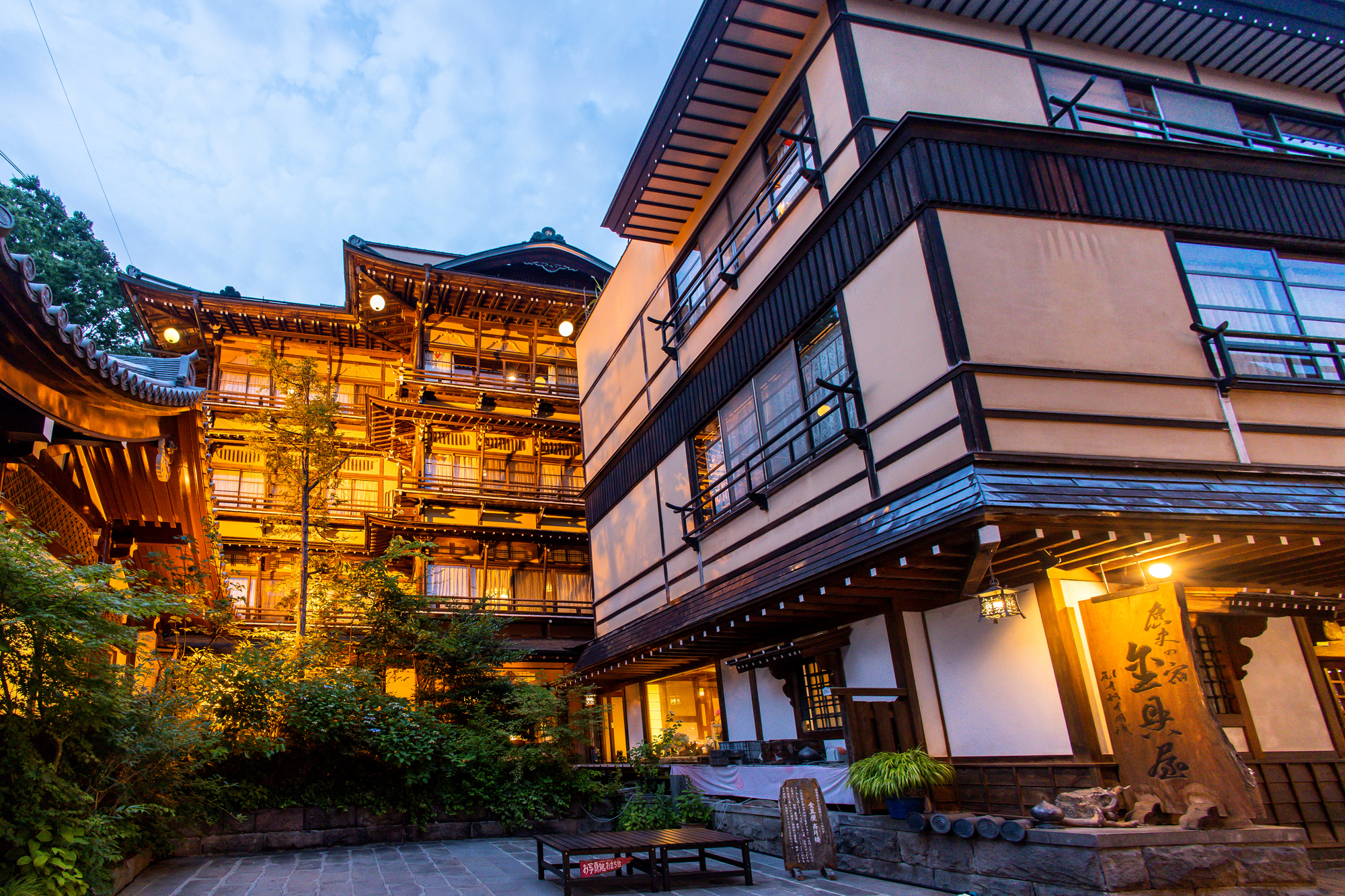
The historic hot spring town of Shibu Onsen
At the foot of Jigokudani lie the historic Yudanaka Onsen and the picturesque, stone-paved Shibu Onsen. Shibu Onsen, where you can experience "Kyu-to-meguri" (a tour of nine public baths), is perfect for an overnight stay to experience Japanese onsen culture. Combining your visit with the snow monkeys will significantly enhance your trip's satisfaction.
3. [Crucial] The 5 Etiquette Rules for Connecting with the Snow Monkeys
This is the core of this guide. Following these rules protects the monkeys and ensures your own safety and a wonderful experience.
3-1. Silence is Golden: No Loud Noises. Listen to the Monkeys' "Language"
Always act quietly within the park. Speaking loudly or shouting suddenly can cause extreme stress to the monkeys. They have very sensitive hearing and live in a peaceful environment. Cultural Context: Why does Japanese culture value "silence"? In traditional Japanese culture, such as the tea ceremony, Zen, and at shrines and temples, "silence" is considered a very important element. This is because it is believed that within silence, one can find the essence of things, subtle beauty, and consideration for others. By practicing this "etiquette of silence" when we enter the monkeys' world, we can perceive their natural expressions, behaviors, and faint calls—their "language." |
3-2. The Eyes Speak Volumes: The "Consideration" of Not Staring into Their Eyes
For monkeys, staring directly into another's eyes is a sign of "intimidation" or "aggression." Even if a human peers in with a friendly smile, they may feel fear and become defensive. Avoid looking at them for extended periods, even through a camera viewfinder. Cultural Context: Japanese communication that avoids directness. Traditionally, the Japanese tend to value indirect expressions and "reading the air" (kuuki wo yomu) over direct eye contact and words. It is a culture of sensing the other's feelings and avoiding direct confrontation. The act of not looking a monkey in the eye is a form of consideration, "not intruding too far into another's territory," which is also found in this Japanese communication style. |
3-3. Let Sleeping Dogs Lie: The "Respect" of Not Touching or Startling Them
They are not pets. No matter how cute they are, never try to touch them. Human hands can carry bacteria that they do not have, potentially causing illness. Also, suddenly reaching out can startle them and lead to unexpected accidents. Cultural Context: Awe of nature and "Yaoyorozu no Kami". In Japanese Shintoism, there is a belief called "Yaoyorozu no Kami," which holds that gods (kami) reside in all things in nature, such as forests, rocks, and animals. Because of this, the Japanese hold nature in awe and believe it should not be carelessly dominated or harmed. Not touching the monkeys can be seen as an expression of this Japanese value system, treating them not just as animals, but as a respected part of nature and life itself. |
3-4. Don't Show, Don't Give Food: The "Responsibility" to Protect Their Wild Nature
This is an absolute rule. Giving them human food can cause them to lose their ability to forage for themselves and become aggressive in seeking human food. Make sure no food is visible from your backpack or pockets; keep it completely stored away. Eating and drinking within the park are strictly prohibited. Cultural Context: The "Mottainai" spirit and coexistence with wildlife. "Mottainai" is a beautiful Japanese term conveying a sense of regret concerning waste. However, it is a mistake to apply it to wildlife by thinking, "They look pitiful, so I'll share." True coexistence means respecting their wild way of life and firmly maintaining the boundary between their world and the human world. Doing nothing, giving nothing, is the greatest "responsibility" we have to protect their future. |
3-5. Photography Etiquette: The Best Memories, with the Utmost Consideration
All of these manners stem from the imagination to "think from the monkey's perspective." That imagination is the most important thing to bring with you to this place. |
4. Beyond the Onsen: A Deeper Guide to Enjoying Jigokudani 120%
4-1. Not Just Hot Springs! The Monkeys' Lives Through the Seasons
While the winter onsen scene is famous, the monkeys live here all year round.
- Spring: The birthing season. You can see adorable baby monkeys clinging to their mothers.
- Summer: They spend their time actively in the lush green forest, climbing trees and playing in the water.
- Autumn: A season of abundance with plenty of food like nuts and berries. They store up nutrition for the winter.
Visiting in different seasons will reveal a completely different side of them.
4-2. Aim for the Best Shot! Photography Tips and Recommended Times
- Time of Day: The monkeys are most active in the hot spring from morning to early afternoon. Immediately after the park opens is recommended as it's relatively less crowded.
- Lens: A telephoto lens is useful for capturing natural expressions without getting too close to the monkeys.
- Angle: Shooting from the monkeys' eye level can result in more intimate and impressive photos. On a snowy day, adjusting the shutter speed to capture the falling snowflakes can create a magical effect.
4-3. Warm Up Your Chilled Body: Local Delicacies and Onsen Inns
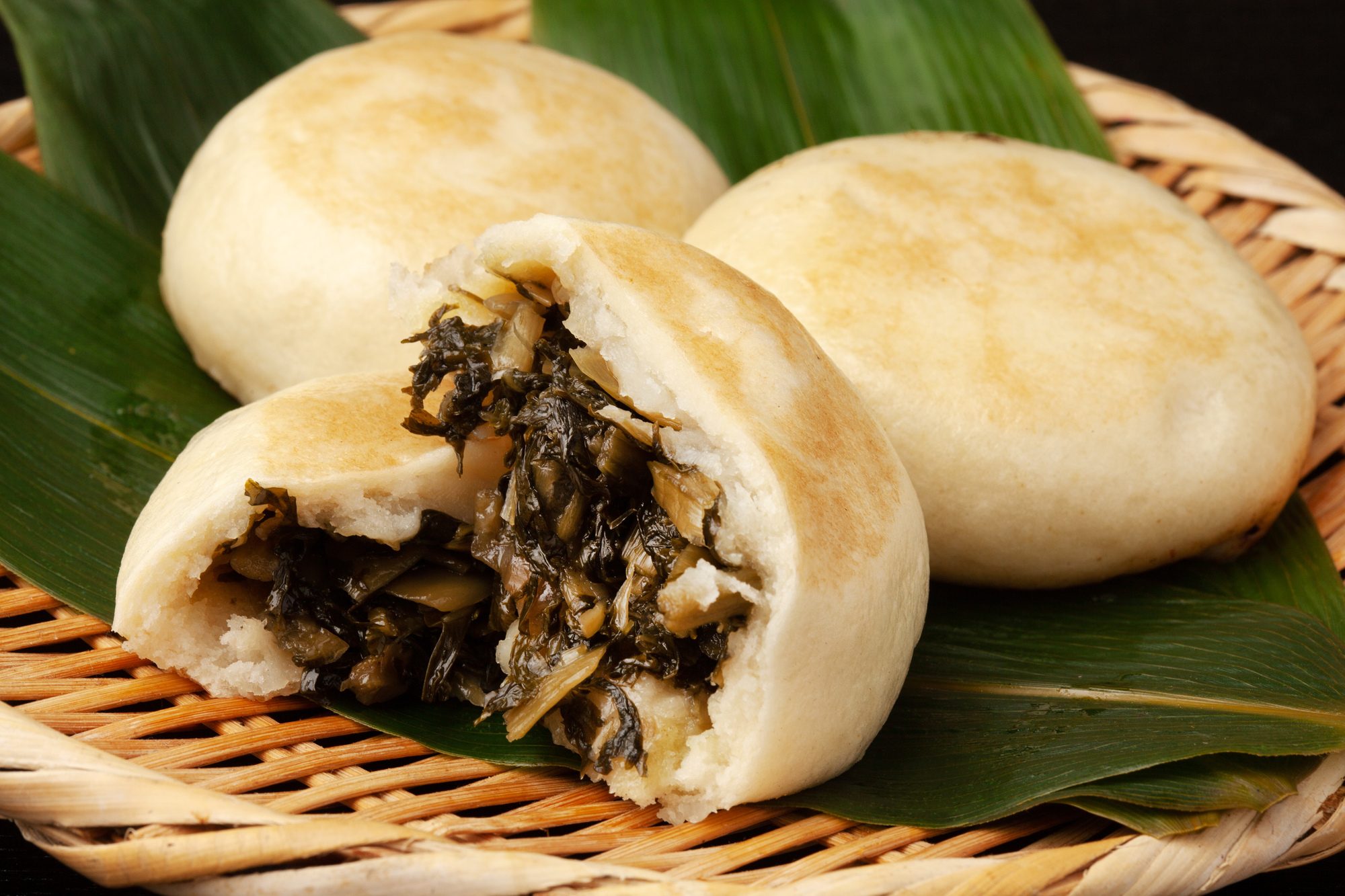
Nozawana-filled oyaki, a Nagano specialty
Warm up your chilled body from the walk on the trail with local food and hot springs.
- Gourmet: Shinshu soba noodles, mushroom dishes, and oyaki (buns filled with vegetables, etc.) are local specialties.
- Onsen Inns: In Yudanaka and Shibu Onsen, there are many facilities offering day-use hot springs and charming traditional inns (ryokan). If you stay overnight, you can also enjoy a kaiseki dinner featuring local ingredients.
5. Planning Your Trip: Model Itineraries to Practice Good Manners
5-1. [Day Trip] Quick Trip from Tokyo! Snow Monkey Express Course
| 08:00 | Depart from Tokyo Station (Hokuriku Shinkansen) |
| 09:30 | Arrive at Nagano Station → Head to Nagaden Bus stop |
| 10:10 | Depart from Nagano Station East Exit (Express Bus) |
| 10:55 | Arrive at Snow Monkey Park bus stop → Walk the trail (remembering the etiquette) |
| 11:30-13:00 | Visit Jigokudani Snow Monkey Park (quietly and with respect) |
| 13:00 | Walk back on the trail |
| 13:45 | Lunch at a nearby restaurant (Shinshu soba, etc.) |
| 15:02 | Depart from Snow Monkey Park bus stop |
| 15:47 | Arrive at Nagano Station → Souvenir shopping |
| 16:30 | Depart from Nagano Station (Hokuriku Shinkansen) |
| 18:00 | Arrive at Tokyo Station |
5-2. [1 Night, 2 Days] Stay in Yudanaka/Shibu Onsen, A Healing Journey of Hot Springs and Culture
- Day 1:
〇 Afternoon: From Nagano Station, take the Nagano Electric Railway to Yudanaka Station. Check into a ryokan in Shibu Onsen.
〇 Evening: Change into a yukata and stroll through the stone-paved onsen town. Experience the "Kyu-to-meguri" (tour of nine public baths).
〇 Night: Enjoy a dinner featuring local ingredients at the ryokan.
- Day 2:
〇 Morning: Take a bus or taxi from the ryokan to Jigokudani. Visit the Snow Monkey Park.
〇 Noon: Lunch at a restaurant at the foot of the mountain.
〇 Afternoon: Return to Yudanaka Station and head back via Nagano Station.
The Most Important Souvenir to Take Home
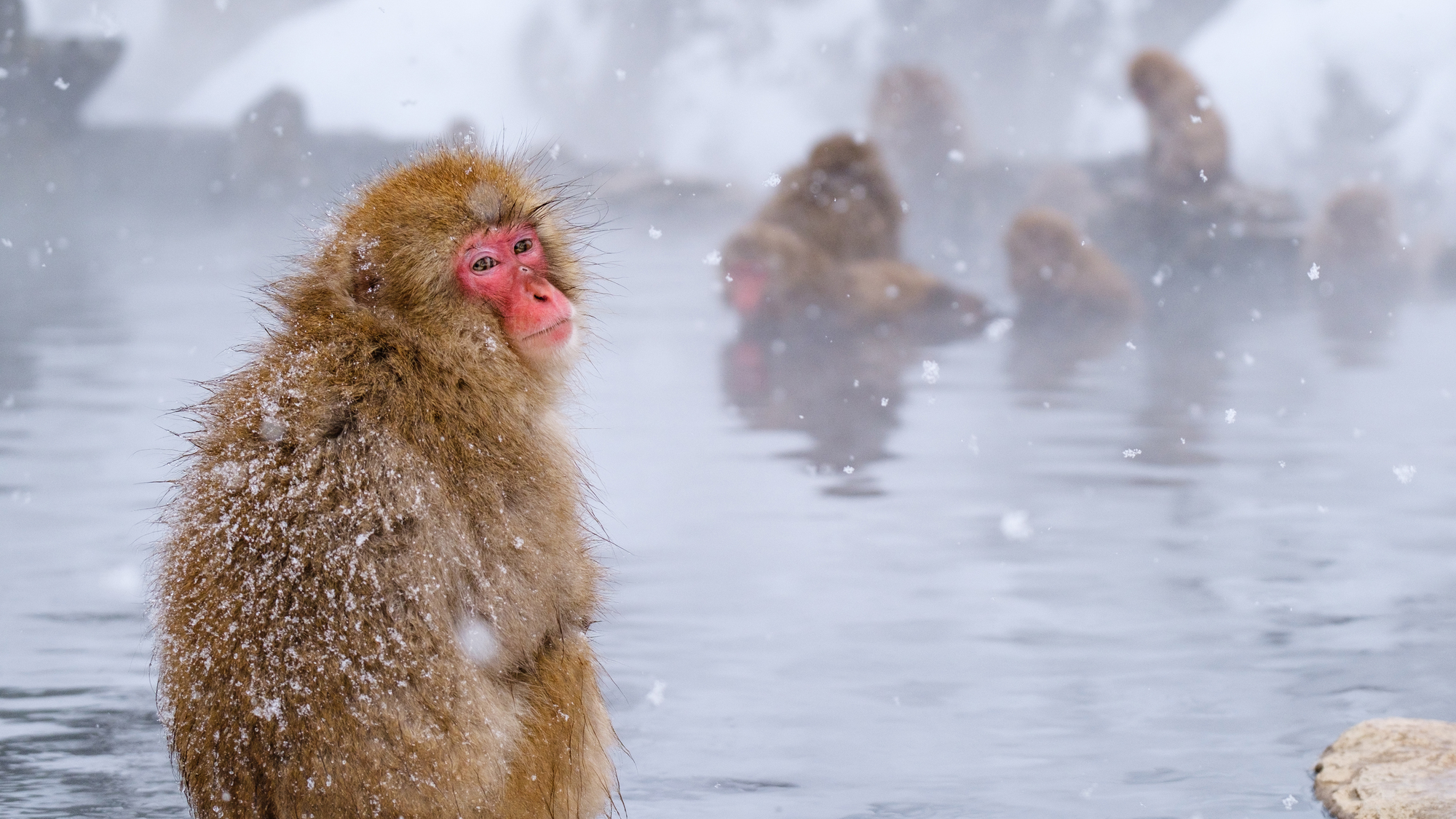
The best souvenir to take home from the Jigokudani Snow Monkey Park is not just the photos captured on your camera. It is a sense of awe for life that thrives in harsh nature, a form of communication called "consideration" that can be understood without words, and the imagination to think about the impact our presence has on their world.
The red faces of the snow monkeys and their calm gaze from beyond the steam will surely be deeply etched in your heart. We sincerely hope that this journey will be an unforgettable experience for you to feel the Japanese perspective on nature and culture firsthand.

